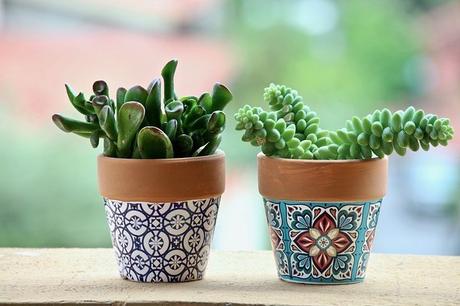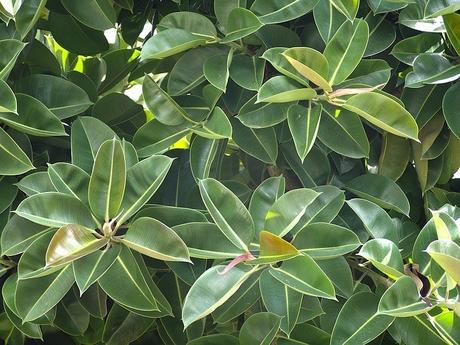
Salt lamps and bee-wax candles are good and effective to keep the air inside the houses pure and fresh. But one should never forget the importance of household plants or the well-ness centric plants, who does the same.
Indoor Air Purifiers
Does not the outside air that ports all the toxins? There are toxins floating outside, in plenty and all thanks goes to the bug killers and herbicides, automobile smokes, and additional industrialised harmful waste. Unfortunately, one finds an overabundance of toxins in the air inside their own home as well.
Outside air catering
Inside air quality is affected by means of:Houseplants are an inexpensive, effective and simple, way to cleanse the indoor air.
- Housework products - mainly laundry cleansing agent and cloth softener. The laundry substances comes first as indoor pollutant
- Chemical flare retardants - generally found in fixtures, beds, and kids' PJs
- Formaldehyde - generally found in cooktops, litter boxes, paper cloths and tissues, carpet-backing, and certain fabrics
- Colognes
- Additional toxins - they are carried in on one's shoes and clothes from outdoors
- Electromagnetic occurrences - gets radiated from PCs, Wi-Fi and additional electronics
Best Houseplants Purifying Indoor Air
The best houseplants to purify indoor air by their attractiveness, effectiveness, usefulness, and hardiness are noted here. This can aid an individual to decide upon which houseplants will best cater to their requirements.
It is a known fact that a 1989 NASA experiment found out that there are certain indoor plants which helps in improving the air quality at home, thus by absorbing toxic chemicals, like Benzene and Formaldehyde from air. A number of different house plants acts as natural air filters too.
Moreover, it has also been shown that being in a setting with plants, help in reducing tension and improving blood pressure and heart-rate.
Most Effective Houseplants
These noted houseplants are the most effective ones, thus removing indoor air toxins and pollutants.
Bamboo Palm
Bamboo palms removes the chemical contaminants from the air, similar to formaldehyde and benzene. They moreover helps in keeping the air moist, which is chiefly supportive during winter months, while the heaters produce excessively dry indoor air. Bamboo palms are with tropical appearance and, although green in spite of the characteristic tan bamboo color, the characteristic tall, skinny canes and fanned leaves thus enhances the beauty.
Rubber Plant

The rubber plant is mainly removes formaldehyde from indoor air. It is a favoured plant for its ease of growth, as well as its look, thus featuring big, rubbery leaves.The rubber plant grows up to 8 feet tall in any suitable condition. This large 'ficus' (ficus robusta) is raised for toughness, meaning that it is not simply one of the most effective plant for purifying indoor air, but is hardy even in less than ideal conditions.
If one prefers slightly larger plant to make the air indoors cleaner, then Rubber plant can be a good choice. It can take a lot of negligence, so they are not as problematic to care for as some other plants. Their large leaves take in more material from the air, which is then gets altered either into nutrients for the plant or compounds for the soil.
English Ivy

English ivy is seen often budding as a cover in foyers and atriums, but then it creates a lovely feature as a topiary. Like the Rubber Plant, English Ivy is acknowledged for its ability to eliminate formaldehyde from the air. English Ivy requires a lot of light for looking at its best, but does fine when the temperature does not become too hot. It is, yet, very easy-going to its environment, as it climbs and spreads over any surface, if given the chance.
One might think of an English Ivy as an outdoor plant that add on to the bucolic charm to old houses. But when one keeps Ivy indoors, it can help in purifying the air inside English Ivy is mainly good for absorbing 'mold' in the air. A study found that English Ivy was capable of absorbing a large share of airborne 'mold', when positioned in a vessel with 'moldy' bread. This plant likes sunny places and somewhat dry soil, so one should plan to put it anywhere sunny!
Boston Fern

One of the best-known varieties of houseplants are ferns, and the Boston Fern is known for being the best plant for eliminating the indoor air pollutants, and for toting moisture to indoor air. Even though, it is a champion at keeping the indoor air clean, the Boston Fern is rather fastidious and call for an alert caretaker. Lack of frequent watering and misting turns the leaves quickly brown and hence falls off.
Dwarf Date Palm
If one is into tropical plants, the Dwarf Date Palm is the one. It is like an attractive mini palm tree fitting in one's living space. The Dwarf Date Palm is one of the most active palms for eliminating indoor air pollution, chiefly xylene, which is found in cleaners and paint diluter. It is likewise quite good at keeping the air wet and is somewhat easy to grow.
Most Beautiful Houseplants
It is essential to have houseplants that keep the air clean, but then what about those plants that are lovely to look at? The comeliest, finest houseplants to purify indoor air are listed below:
Tulips

Tulips are truly pretty to look at. They come in a range of colours, besides doing an excellent job of keeping the air fresh. They have been shown to be effective at removing formaldehyde, xylene, and ammonia from the air. Very attractive, and fairly suitable at eliminating surplus chemicals from the air.
Azaleas
The dwarf Azalea has been raised to stay indoors and blossom seasonally, besides boasts big, attractive blooms. One can buy it almost any time of year. With some care, it can blooms over and over. Of course, one will prefer it blooming as it is an efficient cleanser for air too.
Azaleas, in addition to being an attractive flower which add to the colour to one's home, helps in improving the indoor air by absorbing formaldehyde. One should be sure to keep the Azaleas misted, as a humid environment and moist soil is preferred by them.
Orchids
Almost all Orchids are rather pretty, but the level to which they clean the air, differs. For example, the Dendrobium Orchid features plain white blooms and eliminates spirits, acetone, formaldehyde, and chloroform from the air. More so, the more pulsating Moth Orchid, which features colourful blooms, comprising the familiar bright pink centred ones, is not as effective at cleansing the air.
Wax Begonia
Begonias are beautiful ones available many of pulsating colours, which can bloom year round if provided the right conditions. They also help removing the chemical vapours from the air.
Peacock Plant

The beautiful purple and green shades, helps in seeing where the peacock plant got its name. They can provide some help while keeping the air clean but are equally fastidious, demanding a lot of upkeep and attention to the growing conditions.
Golden Pothos
A common house plant, Golden Pothos are recognised for being extremely robust, besides are challenging to kill. While Pothos is not the most dominant air-purifying plant, its easiness of upkeep means that one can raise this one in their house. Similar to other plants, Pothos has air-purifying abilities as well, so if one is looking to get hold of the aids of house plants but are not so good at keeping them blooming, this one can be a great start!
Peace Lily
Peace lily is one more plant that NASA instituted to be really good in absorbing compounds in the air. It is well-known for its gift in breaking down compounds similar to carbon monoxide, formaldehyde, as well as benzene.
Peace lilies, are sometimes also called as 'closet plants', which do not bloom in straight sunlight. One should put their Peace Lily anywhere where it can get indirect light and provide with all the aids of clean air. This is supposed to be a great apartment plant for anyone who does not have the benefit of a lot of natural light.
Gerbera

NASA found Gerbera daisy be the most effective plant in eliminating benzene from the air. Like Snake Plants, Gerbera Daisies are well-known for their skill in absorbing airborne compounds and producing oxygen at night, which helps those who agonise from 'sleep apnoea'.
Most Useful Houseplants
These plants are likely to be the most all-inclusive, thus keeping one's home clean
Aloe Vera
Aloe Vera is recognised for its ability to appease burned skin. Keeping it around the home, lets one use the fresh gel at a moment's notice for scratches and burns. It can as well, be used within and can be squeezed to prepare smoothies.
Aloe Vera is not one of the best indoor plant for purifying the indoor air, but it has the distinctive skill of releasing oxygen and absorbing carbon di oxide airing night time. It is a good choice for keeping in a bedroom.
One might by now know about the health assistances of Aloe Vera for skin, however the plant itself is likewise great for cleansing air. It works to take in the airborne mixes from paint or cleansing agents, and can likewise have it handy for curing sunburn! Aloe Vera can be used in various food and drink preparation.
Lavender
Lavender, has a soothing, calming effect with its earthy, sweet smell. One can use it to make tea, medicines, and even soaps and body lotions. It is, moreover helpful for cleansing the air by lessening carbon dioxide levels and cleaning bad odours.
Rosemary
Heavy-duty Indoor Houseplants
It is together a gastronomic centre as well as an air-purifying houseplant. Its antimicrobial properties make it a good choice for cleansing the air inside.
Does one has a black thumb? Then it is essential to pick out heavy-duty plants that forgives to the lack of growing skills!
Palms

Palms are to be found in lot of varieties, comprising the Bamboo Palm, which has been stated above. They both are easy to grow and sustain, as well as resilient to pests. Good-looking, strong, andone of the finest plants for cleansing the air.
Syngonium

A remarkable-looking plant with big leaves, the Syngonium is an eye-catching plant which grows. It reasonably purifies the air and is justly a 'pardoning' one to the forgetful-ones.
Philodendrons
Cousin of Syngonium and Philodendrons, are one of the best house plants cleansing the indoor air, and above they are somewhat strong, thus calling for a little maintenance.
Snake Plant
Snake plants have a striking lanky and pointed leaves, which explains the name. There are a lot of species, and while they are not recognised as one of the besthouse plants for cleansing indoor air, similar to Aloe Vera. Moreover, they are easy-growing and resists the pest infestation very well.
Snake plants absorb carbon di oxide and converts it to oxygen. They are the plants that can be to place in one's bedroom as they will mend the air quality as one sleeps. Snake plants furthermore work to eliminate xylene, toluene, and trichloroethylene from the air in one's home.
Mass Cane
This plant is graded number one in NASA's tests for eliminating formaldehyde. Likewise named a Corn Plant, Mass Cane is a common plant for sprucing up a workplace or home. It is a low-maintenance and slow-growing plant for those who want to have a plant that both looks good and cleanses the air indoors, at the same time.
And the awards for Best Houseplants Goes to-
If one wants to choose just a handful from the huge list mentioned above, while taking into all consideration, of the points, here are the list of winners through all sorts:
- Palms - Palms are to be found in lot of varieties, comprising the Bamboo Palm, which has been stated above. They both are easy to grow and sustain, as well as resilient to pests. Good-looking, strong, andone of the finest plants for cleansing the air.
- Tulips - Tulips are truly pretty to look at. They come in a range of colours, besides doing an excellent job of keeping the air fresh. They have been shown to be effective at removing formaldehyde, xylene, and ammonia from the air. Very attractive, and fairly suitable at eliminating surplus chemicals from the air.
- Philodendrons - Robust, exceptional in cleansing indoor air, and they come in plenty of ranges, so one is sure to treasure trove an attractive one!
Essential Risk avoidance of Houseplants
Certain houseplants can be toxic to kids and four-legged friend. The above mentioned house plants are the most operational ain terms of cleansing the indoor air, however not all of them are non-toxic for kids and four-legged friend. One has to make sure to study and check out several plants for protection before getting it into their home.
So, a 'Plantsman' should always try to make a note of all the above details before deciding on the varieties they should place indoors.

